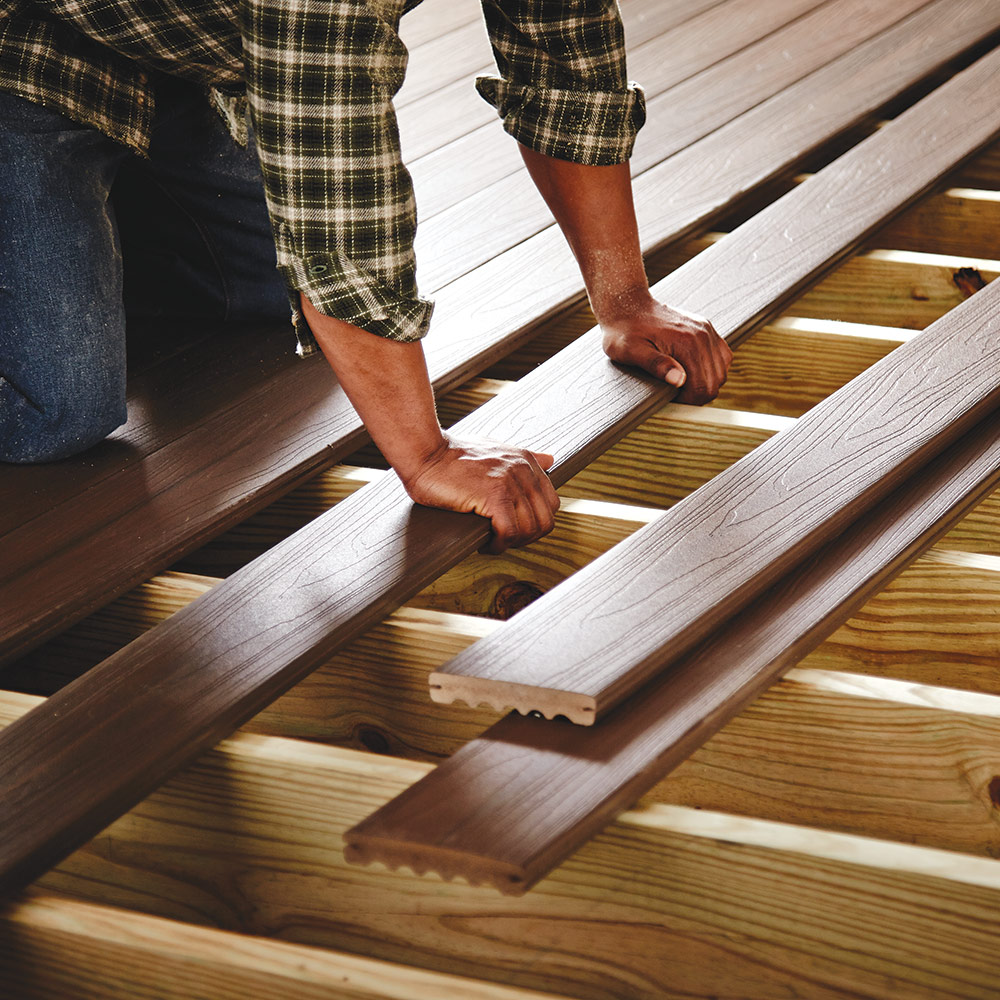What to Look For in a Deck Repair or Replacement
Wood decks are susceptible to rot, insect infestation, and mold/mildew. If these are present, a repair or replacement will likely be necessary.
Surface cleaning and stability issues are easy DIY solutions, but carpentry and structural problems require a professional. Look for the following signs that your deck needs to be repaired: 1. Sagging. Click the https://www.alphaelitecontracting.com/to know more.

A deck that’s loose and sagging can be a major safety hazard. It could also leave your home exposed to the elements, causing mold and mildew. A good cleaning can help with some surface-level issues, but if you notice cracking, soft areas or signs of wood rot, call a professional to take a look.
Decks can move and shift with the seasons, so if you’ve noticed any of your boards popping up from their holes, it’s time to get on top of them before they become a serious tripping or splintering problem. Splinters can injure bare feet and hands, but they also provide easy access for bugs and insects to make their homes in your deck.
Loose boards are usually a sign of weak joist connections or structural problems, but a quick repair will keep your guests and pets safe from harm. The easiest way to fix this issue is by nailing or screwing the loose board back into place. It’s important to use the right tool for the job, however. A framing hammer can be used to break off the old nails and remove the debris from the deck, but you should never apply too much pressure when prying or yanking the board loose as this might damage it further. Screws are better for this task because they don’t rely on friction to fasten to wooden surfaces and have many shaft threads that can hold the screws in place even when they’re tightened.
Once the loose board is removed, check the joist connection and fastener to ensure that it’s still secure. It’s also a good idea to replace any damaged or rotting deck posts to prevent further damage.
Wood composite materials like tile and panels can be installed by a skilled DIYer, but any in-depth repairs that require carpentry skills should be left to professionals with experience assembling decks. A professional can also reseal the deck to protect it from further weather damage and keep it looking new. If you’re ready to schedule your deck repair, contact a local company
Rot
Wood rot is the result of microbes digesting the sturdy cellulose fibers that give lumber its strength and rigidity. Over time, the lack of stiff structure leaves behind a wet, decaying material that can leave your deck crumbly and unsafe. Wood rot is also more difficult to treat than other damage, so it’s important to catch it early and have a professional rot repair specialist assess and fix the issue quickly.
Most rot is caused by fungi that thrive in dark, damp conditions. The fungi decompose the wood and break down its cell walls, resulting in a spongy or soft material that splinters and discolors easily. If left untreated, rotting boards and joists will eventually deteriorate to the point where they need to be removed and replaced.
Several factors make your deck vulnerable to rot, including improper construction and water exposure. If your deck is built too close to the house, moisture can penetrate the house wall and lead to a fungal infestation of the interior space. Poor drainage, flashing and positioning can exacerbate the problem. And, standing water on your deck is the perfect breeding ground for fungus and insects like termites.
While there’s no way to eliminate all the risk factors, proper design and installation of your deck can help prevent rot by accounting for water sources, drainage and exposure. Annual maintenance is another essential factor in prevention. Annual cleaning and a protective stain or sealer will help keep the wood protected against water, sun, sand and other elements that can wear it down.
In addition, a regular inspection and timely repair can save you from a costly replacement project down the line. Look for signs of rot, including large cracks and splinters, in the Deck Boards, Joists and Fasteners. If you notice the appearance of spongy or splintering boards, seek professional repair services as soon as possible to ensure your Deck continues to add value and safety to your home.
If your Deck joists are infected with rot, you’ll need to remove the damaged material and replace it with new, pressure-treated joists. This is a bigger job than replacing the Decking panels, as you’ll need to also remove the ledger board and repair portions of the house wall that may be affected by the rot.
Pest Damage
Wood decks can be susceptible to damage from a variety of pests, especially those that thrive in damp environments. This includes termites, carpenter bees, powderpost beetles, and other rodents that infest weakened wood and chew through boards. The best way to keep these pests away from your deck is to apply a protective sealant, and to perform regular inspections and maintenance.
Termites are among the most destructive pests to infest wood, causing severe structural damage over time. They feast on cellulose, the material that gives wood its strength and structure, and tunnel through the material to create hollow chambers and spaces that weaken it. This can compromise the load-bearing capacity of your deck and pose a safety hazard for people walking on it. Termite infestations also cause unsightly trails and boreholes on the surface of your deck, detracting from its aesthetics and value.
A few signs of termite damage include mud tubes that appear on the ground near the deck, or a hollow sound when tapping the wood with a hard object. A pest control professional will be able to identify and eradicate the termites in the area and repair your deck.
Wood rot can also compromise the structural integrity of your deck, but it’s not always easy to spot early on. The most obvious sign of rotting wood is a discolored surface, but other symptoms can include sagging areas, uneven surfaces, and the smell of mold or mildew. It’s important to treat rotted wood as soon as possible, or the problem will worsen as water continues to reach the underlying materials.
Many types of wood, particularly untreated ones, can lose their color over time due to weather exposure, use, natural aging, and debris like stray fall leaves. You may be able to restore some of the original color with a wood cleaner and brightener or you can paint or stain it a new shade. Be sure to reseal the deck after applying the new stain or paint to prevent further damage. If you prefer a more natural look, consider adding a layer of wood mulch or chopping up and using the wood chips from around your home to protect your deck from bugs and other insects.
Weather Damage
Wood decks are exposed to a lot of moisture, which can cause warping, cracking, and rot. To help prevent this damage, it’s important to regularly inspect your deck and keep it sealed with a water-resistant stain or paint. You can check to see if your deck is absorbing too much moisture by sprinkler a small amount of water on the surface. If the water beads and quickly evaporates, it’s time to reseal your deck.
A wood-staining product with a low sheen is best for preserving your deck’s look and minimizing moisture absorption. To apply a new coat of stain, wait until the weather is dry and use a clean, wide brush to evenly distribute it. After the first coat dries, lightly sand the area with 150-grit sandpaper to smooth out the stain. Then, apply a second coat and allow it to dry completely before using your deck again.
The most common deck repair is for structural problems such as sagging or warped boards. Regular inspections will allow you to catch structural issues early, and the sooner they are repaired the less damage they can cause. A sagging deck is a safety issue, and if it’s not repaired, it can collapse or even fall over. Typically, sagging can be corrected by removing and flipping the affected boards so the undamaged flat side is facing upward. If this doesn’t fix the problem, a professional may need to replace the board.
Moisture accumulation is another major source of deck problems. Termite infestations can cause structural damage while rotting and mold can weaken the boards and railings. Similarly, water damage causes swelling, warping, and sagging. This can be prevented by properly sealing and a proper drainage system. It’s also important to check for loose screws, nails, and bolts regularly, as weather fluctuations can cause them to loosen over time. It’s recommended to use a waterproof resin glue when repairing these fasteners, and read the label carefully to ensure it bonds with wood and isn’t toxic.
Colorado is notorious for its surprise spring and summer hail storms, which can cause significant damage to your deck. After a hailstorm, it’s vital to inspect your deck for damage as soon as possible. It’s a good idea to contact a professional builder or home improvement specialist to evaluate the damage and recommend the best course of action, which may include a full deck replacement.
